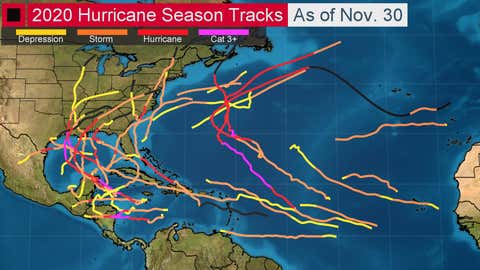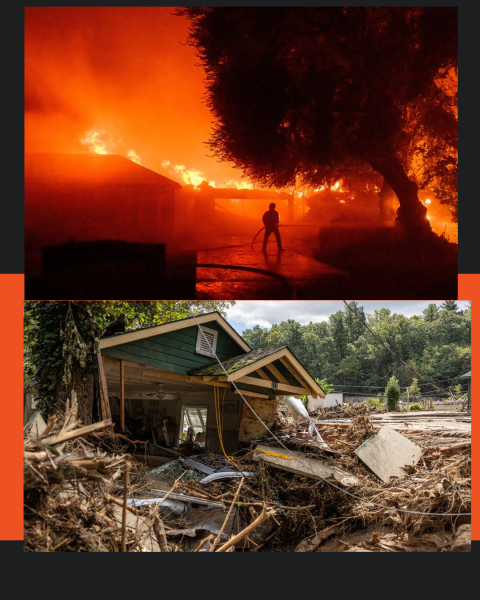2020 hurricane season was the most active ever with a record 30 named storms with 12 making U.S. landfall

No, that’s not New Years Eve confetti streamers covering the southeast United States. It’s the tracks of the 30 named storms of the 2020 Atlantic hurricane season.
The 2020 Atlantic hurricane season, which came to a close on Nov. 30, featured a record-breaking 30 named storms, 12 of which made landfall in the continental United States. It was also the most active and the seventh costliest Atlantic hurricane season on record.
Hurricanes are becoming increasingly powerful and causing an increased risk to life and property. Numerous environmental factors contribute to the development of hurricanes, most notably global warming. With the global warming threat growing each year, the size and intensity of hurricanes have also been growing.
As reported by the National Oceanic and Atmospheric Administration (NOAA) a hurricane is “a rotating, organized system of clouds and thunderstorms that originates over tropical or subtropical waters and has closed, low-level circulation.”
Storms begin as a tropical wave, which is an area of low pressure. When the tropical wave reaches plentiful moisture and warm water, conditions are prime for it to develop into a hurricane. As the system moves across the ocean, it accumulates warm air which causes lower pressure. When the wind speeds within the storm reach 74 miles per hour, the storm reaches hurricane classification.
Also according to the NOAA, “during just one hurricane, raging winds can churn out about half as much energy as the electrical generating capacity of the entire world, while cloud and rain formation from the same storm might release a staggering 400 times that amount.”
Hurricanes can cause extreme destruction to the areas they strike. Bringing heavy amounts of rain, strong winds, and even the possibility of tornadoes, hurricanes can cause damage to just about anything. Olympic Heights science teacher Ms. Bethany Breadstill stated, “Hurricanes themselves can mess up or destroy vast areas. Tornadoes can also spin off of hurricanes.”
The last 2020 storm to reach hurricane status was Hurricane Iota. Iota, along with Hurricanes Eta and Laura, were classified as Category Four hurricanes and made landfall between August 29 and November 16. Hurricanes Eta and Laura caused about $21 billion in damage and left roughly 255 fatalities and 120 people missing.
As stated by The National Geographic, “Climate change encompasses not only rising average temperatures but also extreme weather events, shifting wildlife populations and habitats, rising seas, and a range of other impacts.” According to nrdc.com, “scientists say that unless we curb global-warming emissions, average U.S. temperatures could increase by up to 10 degrees Fahrenheit over the next century.”
Although the number of named storms per hurricane season fluctuates, the development of such storms has increased dramatically. A yaleclimateconnections.org article stated, “The authors of the 2013 study found a substantial regional and global increase in the proportion of the strongest hurricanes… The authors attribute that increase to global heating of the climate: ‘We conclude that since 1975 there has been a substantial and observable regional and global increase in the proportion of Cat 4-5 hurricanes of 25-30 percent.’”








